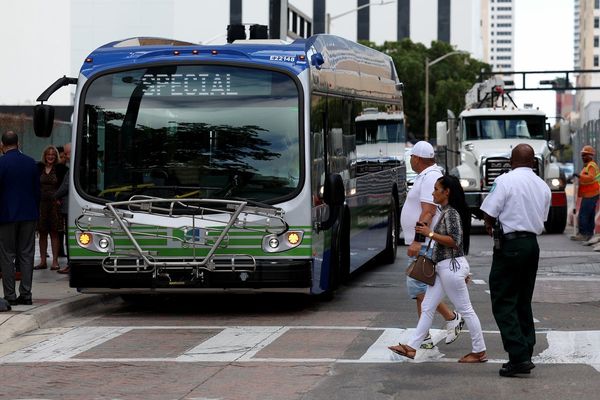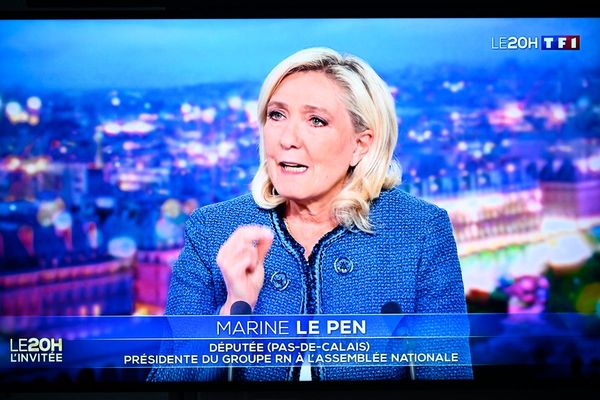
By Ian Murphy and Ray Wang
With the Indo-Pacific Economic Framework, the United States is seeking not only to bolster Taiwan’s defense against China but also to offer the country export opportunities in the geopolitically tense region.
In 1979, Washington re-established diplomatic relations and signed a bilateral trade agreement with the People’s Republic of China, believing increasing economic liberalization would lead to political liberalization in China. The U.S.’s thinking was that a new Chinese middle class would gradually lobby the government for more political rights and a greater voice in Chinese politics.
The first challenge to this thinking came in 1989 with the Tiananmen Square Massacre under the leadership of Deng Xiaoping. Despite China’s violent repression of political reform in 1989, U.S. corporations continued to trade with China, justifying large investments and outsourcing as a way of benefitting the U.S. consumer through lower commodity prices.
But since 2012, Xi Jinping has systematically centralized political power and rolled-back Deng-era economic reforms. Xi’s most notable economic actions are the reversal of economic liberalization through the re-centralization of the economy through state-owned enterprises and the use of the Common Prosperity Policy to penalize several economic sectors.
One of the key goals of the Common Prosperity Policy is to reduce economic inequality within China. Noble as the goal appears, Xi has used this policy to crack down on the private education sector, video game and entertainment industry, and the technology sector.
While the pandemic era economic slowdowns have been the main focus of consumers worldwide, the Chinese Communist Party’s politically motivated economic crackdowns show that China does not conduct trade policy in a fair and reciprocal manner. It’s critical after Covid-19 for countries and corporations to secure their supply chains by working with like-minded partners and reducing trade barriers.

The Creation of the Indo-Pacific Economic Framework
President Biden’s Indo-Pacific Strategy focuses on collectively countering China’s regional influence, but several regional economies rely heavily on trade with China, complicating his attempts to bring the region together diplomatically and militarily. The Trump administration’s decision to leave the Trans-Pacific Partnership has reduced the U.S.’s economic leverage in the region, making an Indo-Pacific economic strategy critical to the country’s national security.
The U.S. has taken the lead in promoting economic development in the Indo-Pacific with the IPEF among like-minded partners. While supporting its commercial, diplomatic, and strategic security goals, the initiative signals a departure from previous plans by promoting intra-Asia trade.
Unlike conventional trade deals, the IPEF does not offer access to the U.S. consumer market or tariff reduction, which means that the U.S. is forgoing its traditional economic bargaining power. The Biden administration chose this strategy in order to explore and define shared objectives regarding trade regulations, technology standards, supply chain resiliency, labor standards, infrastructure development, and decarbonization on an equal footing with its partners in the Indo-Pacific.
By focusing its attention on a soft power construct, the U.S. is also encouraging greater intra-Asia trade. These multilateral discussions will consider the input of all participants on similar trade and labor practices, which will make it easier for participants to trade and invest in each other’s economies.
The Concern and Challenges Ahead
The launch of IPEF is a critical step in the Biden administration’s deepening of the U.S.’s economic ties with countries in the region, building a strong global supply chain with common rules of engagement. Still, there are numerous challenges ahead. The IPEF has been criticized for its lack of market access and tariff reduction, which is one of Southeast Asia’s top trade priorities. Most countries in the region want to gain wider access to the U.S. market and direct trade benefits.
Aside from its focus on supply chains, other goals of the Indo-Pacific Economic Framework, such as clean energy and anti-corruption initiatives, lack priority for other member states. The U.S.’s high expectations may also be seen as a burden to developing nations, slowing down the progress of negotiations or acting as a disincentive to join the framework.
U.S. Trade Representative Katherine Tai has said negotiations are expected to start by midsummer 2022, but the Indo-Pacific Economic Framework is still a long-term project, and it may take several years to see tangible results. Since the IPEF is a flexible economic agreement, it may end up defying current expectations and end up forming close bonds between member states beyond the realm of economic cooperation.

Opportunities for Taiwanese Companies
Although Taiwan will not be participating in the Indo-Pacific Economic Framework at the start of this summer’s negotiations, senior U.S. officials intend to make participation in the framework flexible. The United States has long believed that engaging in economic dialogue with Taiwan would be mutually beneficial for both parties, particularly in the realm of improving the business environment, encouraging innovation, and fostering fair and transparent business competition. The U.S.’s commitment to engaging with like-minded partners means that it is unlikely to exclude Taiwan from IPEF dialogues.
Taiwan has already shown its eagerness to engage in trade development through the New Southbound Policy and by meeting with foreign trade representatives during Covid-19. Taipei stands to benefit greatly by following IPEF negotiations and implementing the trade policy changes agreed to by the members. Taiwan already promotes itself as an attractive destination for foreign corporations to enter the Asian market. Following the terms of IPEF regardless of membership status will help Taiwan integrate more seamlessly and diversify its trade away from China and shift towards Indo-Pacific nations.
Although Taiwan is not likely to be a full member of IPEF soon, it still stands to gain from bilateral trade negotiations with the United States. These talks with Taiwan, which are taking place this summer, are covering topics already being discussed between IPEF members, like aligning technological standards, reducing barriers to agricultural products, and ways to reduce non-tariff barriers for importers and exporters. Both Taiwan and the U.S. stand to gain by increasing trade between like-minded partners during the post-Covid economic recovery and fostering an environment of intra-Asia trade. Taiwan is expected to engage with the U.S. and other IPEF members in an unofficial capacity and continue to be an important part of the global supply chain.
Ray Wang is a senior student of diplomacy and international relations at Tamkang University. Currently, he is a visiting student who majors in diplomacy and political science at Sungshin Women’s University in South Korea.
Ian Murphy is an MBA student at National Taiwan Normal University. He earned a BS in International Relations at Seton Hall University and MA in National Security Studies at American Military University. Ian’s journalistic interests include international relations, trade, and international security in the Indo-Pacific.
READ NEXT: What Ukraine Means for Taiwan’s Security
TNL Editor: Bryan Chou, Nicholas Haggerty (@thenewslensintl)
If you enjoyed this article and want to receive more story updates in your news feed, please be sure to follow our Facebook.







